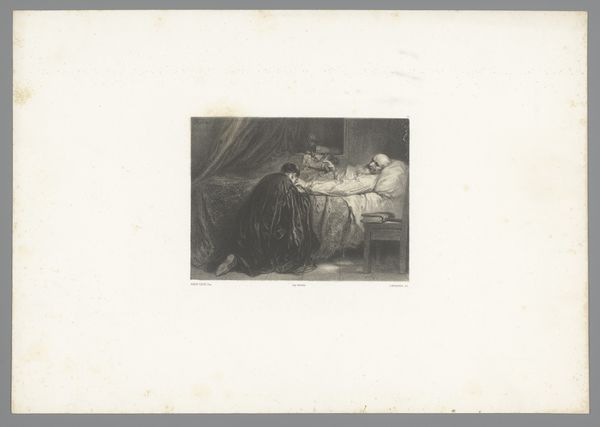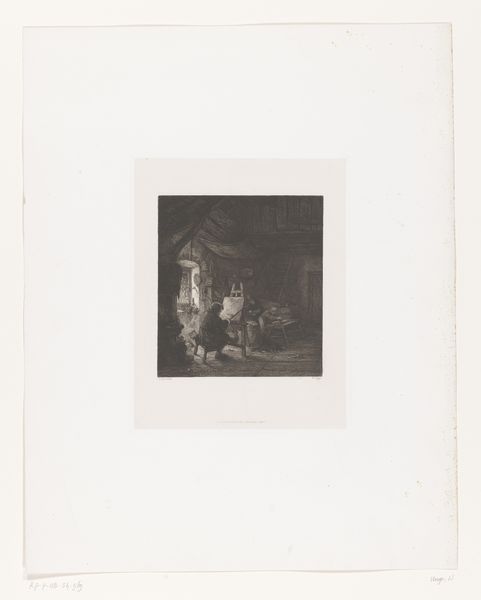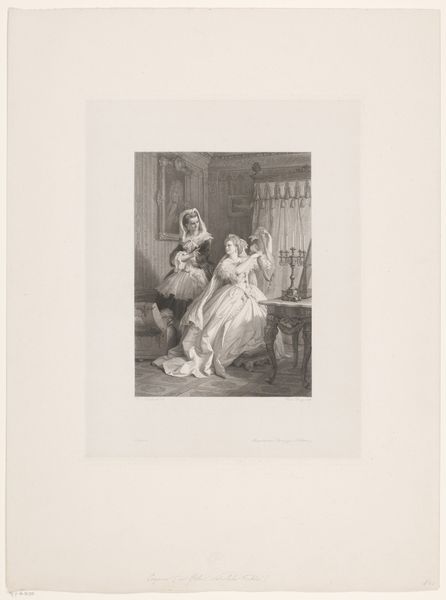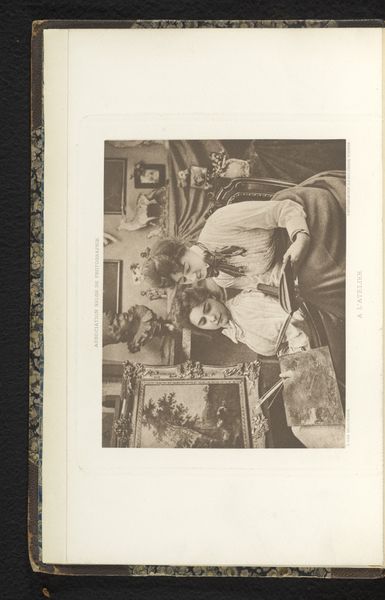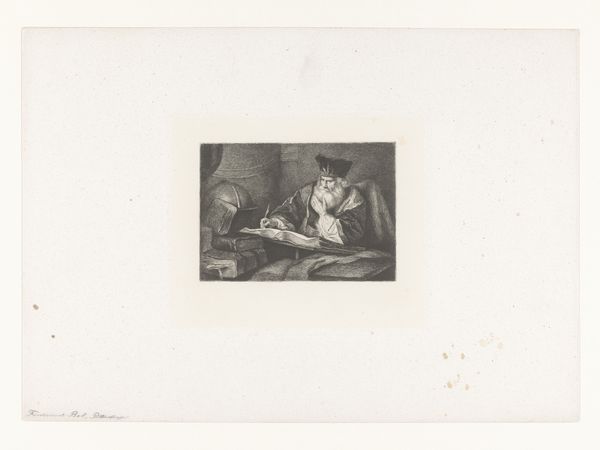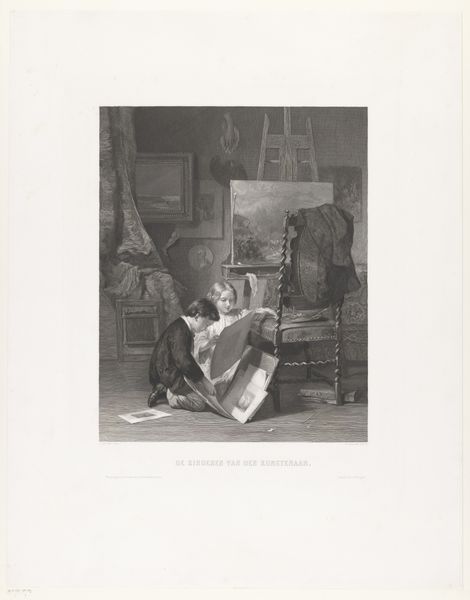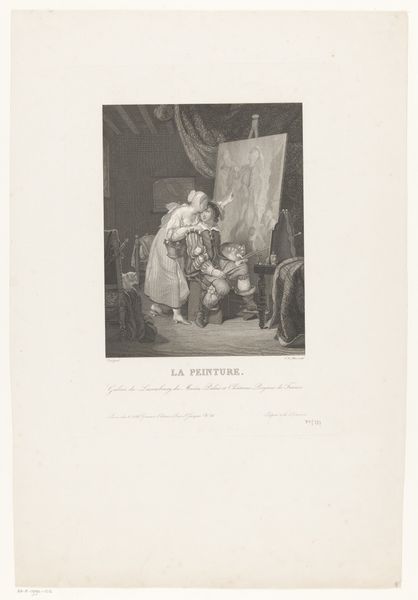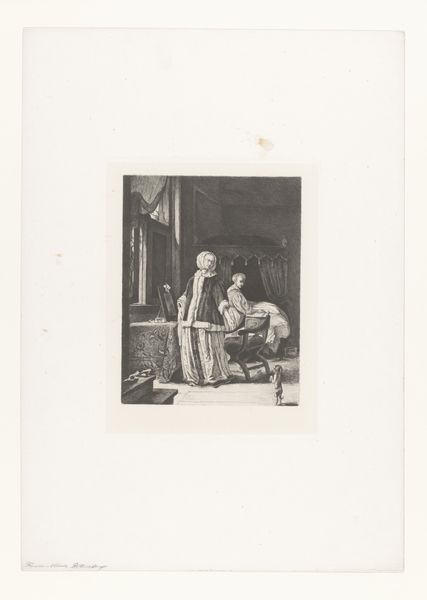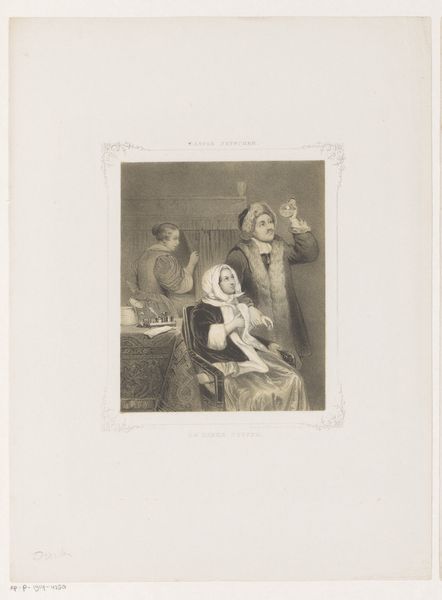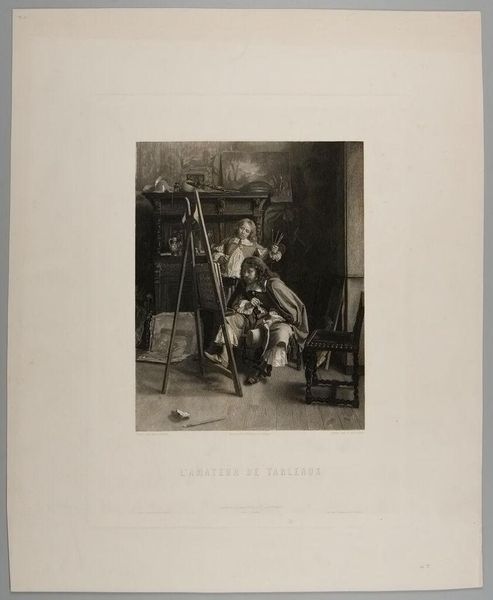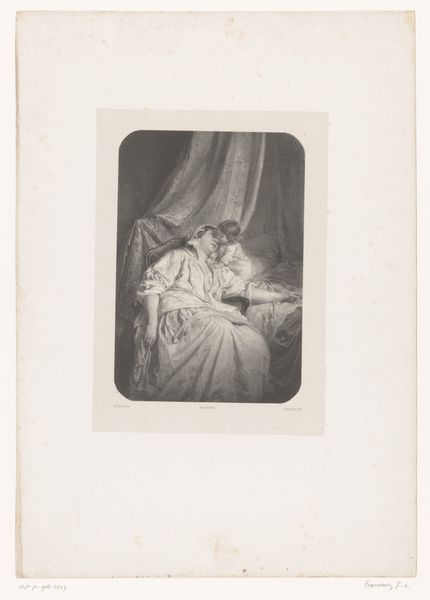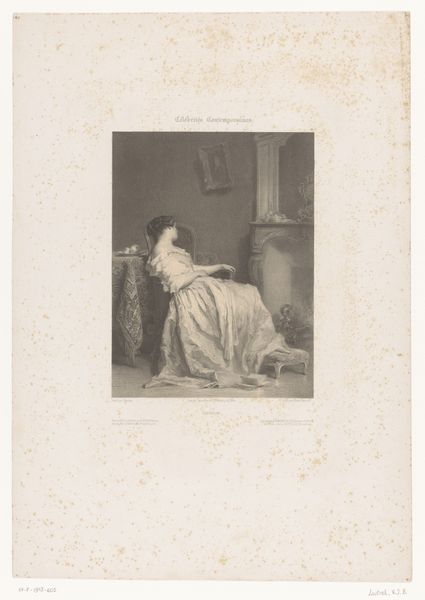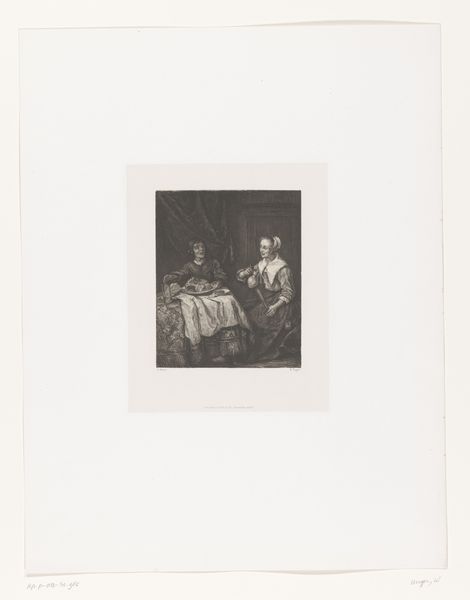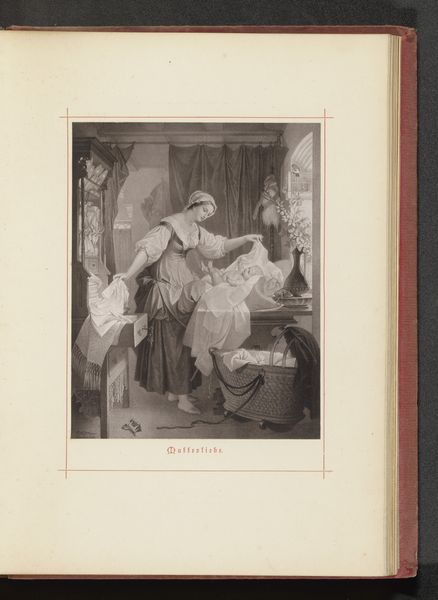
Dimensions: height 417 mm, width 457 mm
Copyright: Rijks Museum: Open Domain
Curator: Standing before us is "Two Children Praying at a Bedside," potentially dating back to 1858. The artist is Jules François, and it’s presented as an engraving. Editor: The mood is incredibly somber; that stark contrast and meticulous detail pull you right in. Is that… illness in the bed? Curator: Possibly. The light definitely draws attention to the act of prayer and the condition of the one bedridden. Think about printmaking techniques during the mid-19th century—the skill required to capture this range of values and textures! Engraving was often about making art accessible, reproducing paintings for wider distribution, practically industrializing art. Editor: Industrializing art, yes, making devotional and sentimental art more broadly available—for who exactly? Considering the prevalence of diseases in that era, perhaps it's also subtly exploring social disparities, or perhaps just comforting people regarding their beliefs on childhood health? Those praying—what choices were they even afforded by gendered Victorian mores? And where are their parents, one might ask? Curator: I can see your focus on the themes. But for me, it's also how skillfully the engraver transforms a potentially painted original into this highly reproducible object. It puts power, affordable devotion, directly into homes. And if the prayer doesn't work, there's a whole economy, practically an industry behind grief and mourning available to families at the time! Editor: Absolutely, there's a material culture interwoven with these emotional narratives! Did devotional art of this period ease gender- and class-related concerns, I wonder? Or underscore divisions? Both, maybe? It feels both incredibly private and intensely public at the same time! Curator: Yes, I’d agree with that—simultaneously intimate and reproduced en masse. Well, thank you; as always, I feel I see more every time. Editor: And to reflect, I see how looking through the lenses of both social and art history shows us a path of understanding. It just underlines, again, that nothing exists in isolation, whether it is the prayers being heard by whomever in Heaven or on Earth.
Comments
No comments
Be the first to comment and join the conversation on the ultimate creative platform.
